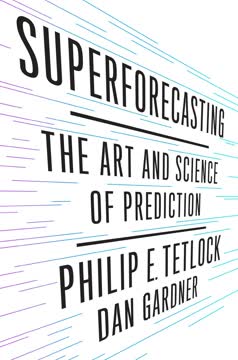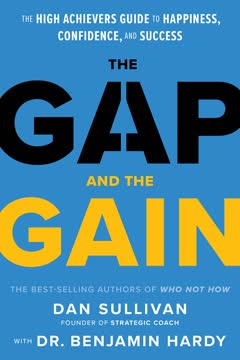Key Takeaways
1. Learning is crucial for survival in today's rapidly changing world
"Learn or Die: Is this just a snappy title or is it a business truth?"
Adapt or perish. In today's fast-paced, global environment, characterized by high levels of uncertainty, ambiguity, and change, individuals and organizations must continuously learn, adapt, and improve to remain relevant and competitive. The rapid pace of technological advancement and globalization has created an environment where new competitors can arise from anywhere, reaching customers globally with minimal barriers to entry.
Learning drives success. Both operational excellence and innovation, key components of successful business models, are fundamentally dependent on learning. Organizations cannot learn unless the individuals within them learn. This requires exploration, invention, experimentation, and adaptation – all of which necessitate learning. The increasing volatility in the business world has shortened the life cycle of competitive advantages, products, and even public companies, making continuous learning and adaptation essential for long-term success.
2. Our minds are wired for efficiency, not learning
"We have a strong tendency to reject ideas that fail to fit our preconceptions."
Cognitive biases. Our brains are designed to be efficient, which often means relying on existing mental models and shortcuts (heuristics) rather than engaging in deep, critical thinking. This efficiency can hinder learning by making us resistant to new ideas that challenge our existing beliefs. We tend to seek confirmation of what we already believe, rather than actively looking for disconfirming evidence.
System 1 vs. System 2 thinking. Daniel Kahneman's concept of System 1 (fast, automatic) and System 2 (slow, deliberate) thinking illustrates how our minds often default to quick, intuitive responses rather than engaging in deeper, more analytical thought processes. To learn effectively, we must consciously engage System 2 thinking, which requires more effort and energy. This involves:
- Suspending judgment
- Considering alternative perspectives
- Questioning our assumptions
- Seeking out disconfirming evidence
3. Emotions play a vital role in cognition and learning
"Can you be totally logical or rational? No. Can emotions ever help you make good decisions? Yes. Can emotions ever lead you to make bad decisions? Yes."
Emotion-cognition integration. Contrary to popular belief, emotions and rational thought are not separate processes but are deeply intertwined. Emotions influence every stage of cognition, including perception, attention, memory, decision-making, and social functioning. This integration means that we cannot simply "leave emotions out" of our thinking and learning processes.
Positive emotions enhance learning. Research has shown that positive emotions generally enhance cognitive processing, thinking, and learning. They can:
- Improve our ability to evaluate ambiguous and neutral data
- Help us see alternative interpretations or explanations
- Reduce conflict in face-to-face negotiations
- Increase creativity and problem-solving abilities
Conversely, persistent negative emotions like anxiety or fear can impair comprehension, creativity, and retrieval from long-term memory. Creating a positive emotional environment is therefore crucial for effective learning and decision-making.
4. Cultivate a growth mindset to become a better learner
"The most important quality that differentiates successful people from unsuccessful people is the capacity to learn and adapt."
Fixed vs. growth mindset. Carol Dweck's research on mindsets reveals that individuals with a growth mindset – those who believe their abilities can be developed through effort and learning – are more likely to embrace challenges, persist in the face of setbacks, and ultimately achieve higher levels of success. In contrast, those with a fixed mindset believe their abilities are innate and unchangeable, leading them to avoid challenges and give up easily when faced with difficulties.
Developing a growth mindset. To cultivate a growth mindset:
- Embrace challenges as opportunities for growth
- View effort as the path to mastery
- Learn from criticism and feedback
- Find inspiration in others' success
- Use the phrase "not yet" instead of "can't" when faced with difficulties
Organizations can foster a growth mindset culture by:
- Rewarding effort and improvement, not just outcomes
- Providing opportunities for continuous learning and development
- Encouraging risk-taking and viewing failures as learning experiences
5. Create a positive learning environment that promotes psychological safety
"Fear does little to encourage learning."
Psychological safety. Amy Edmondson's research highlights the importance of creating an environment where team members feel safe to take interpersonal risks, such as admitting mistakes, asking questions, or offering new ideas. This psychological safety is crucial for fostering learning and innovation within organizations.
Key elements of a positive learning environment:
- Permission to speak freely without fear of punishment
- Encouragement of constructive dissent and debate
- Tolerance for mistakes and failures as learning opportunities
- Humble, passionate leaders who act as stewards of the organization
- Strong, purposeful culture with cultural fit-based hiring practices
- High employee engagement and mutual accountability
Organizations that create such environments, like W.L. Gore & Associates and IDEO, demonstrate higher levels of innovation, adaptability, and overall performance.
6. Engage in high-quality learning conversations
"Learning is a team sport."
System 2 conversations. High-quality learning conversations, or "System 2 conversations," are deliberate, nonjudgmental, nondefensive, and open-minded exchanges. These conversations aim to stress-test beliefs and reach the best objective result, rather than confirm existing views or compete for dominance.
Key elements of effective learning conversations:
- Suspend judgment and preconceived notions
- Actively listen and reflect on others' perspectives
- Ask questions to deepen understanding
- Share personal experiences and vulnerabilities
- Seek to understand, not to win or prove oneself right
Humble inquiry. Edgar Schein's concept of humble inquiry emphasizes the importance of asking questions from a place of genuine curiosity and respect. This approach builds trust and fosters more open, honest communication, which is essential for learning and problem-solving in complex environments.
7. Use critical thinking tools to challenge assumptions and improve decision-making
"Pain + Reflection = Progress"
Unpacking assumptions. One of the most crucial aspects of critical thinking is identifying and challenging the underlying assumptions that shape our beliefs and decisions. Tools and processes that can help with this include:
- Root cause analysis (e.g., Toyota's "5 Whys")
- PreMortem technique (imagining a project has failed and working backward)
- Learning Launches (low-cost, quick experiments to test new ideas)
After Action Reviews (AARs). Developed by the U.S. Army, AARs are structured debriefs that occur after an action or project. They focus on four key questions:
- What was expected to happen?
- What actually happened?
- Why were there differences?
- What can we learn from this?
These tools help individuals and organizations learn from experiences, challenge mental models, and make better decisions in the future.
8. Build a High-Performance Learning Organization (HPLO)
"HPLO = Right People + Right Environment + Right Processes"
Right People. Hire and develop individuals with:
- Growth mindset
- Intrinsic motivation to learn
- High self-efficacy
- Openness to feedback and new experiences
Right Environment. Create a culture that:
- Promotes psychological safety
- Encourages experimentation and risk-taking
- Values continuous learning and improvement
- Fosters high employee engagement
Right Processes. Implement systems and practices that:
- Facilitate critical thinking and decision-making
- Enable high-quality learning conversations
- Promote knowledge sharing and collaboration
- Measure and reward learning behaviors
By aligning these three elements, organizations can create a self-reinforcing system that drives continuous learning, adaptation, and high performance.
9. Bridgewater Associates: A case study in radical transparency and continuous learning
"We all are dumb shits."
Radical Transparency. Bridgewater Associates, the world's largest hedge fund, has built a culture of extreme openness and honesty. All meetings are recorded and available for review by any employee, and everyone is encouraged to speak their mind and challenge others' ideas, regardless of hierarchy.
Key elements of Bridgewater's learning culture:
- Constant feedback and evaluation (e.g., "Dot Collector" tool)
- Explicit acknowledgment of personal weaknesses
- Emphasis on personal growth and development
- Data-driven decision-making
- Belief that "pain + reflection = progress"
While Bridgewater's approach may seem extreme, it demonstrates how a relentless focus on learning and improvement can drive exceptional results in a highly competitive industry.
10. Intuit: Transforming into an innovation-driven, experiment-based organization
"Everything is an experiment."
Design for Delight (D4D). Intuit's transformation began with the introduction of D4D, a design thinking approach aimed at creating products that would "delight" customers emotionally. This shift required changes in both processes and mindset throughout the organization.
Rapid experimentation. Intuit institutionalized a culture of continuous experimentation, where employees are encouraged to test ideas quickly and cheaply. Key aspects include:
- "Leadership by experiment" rather than hierarchy
- Emphasis on learning from failures and surprises
- Use of metrics to evaluate experiments objectively
Cultural transformation. Intuit's journey demonstrates that even successful companies can reinvent themselves to become more innovative and adaptable. This requires strong leadership commitment, changes in organizational structure and processes, and a willingness to embrace failure as a learning opportunity.
11. UPS: Achieving operational excellence through constant improvement and adaptation
"We're never satisfied with the way things are, if they can be improved."
Constructive dissatisfaction. UPS has built a culture of continuous improvement, driven by what founder Jim Casey called "constructive dissatisfaction" – a constant drive to find better ways of doing things, even when current methods are successful.
Key elements of UPS's learning culture:
- Relentless focus on measurement and data analysis
- Employee-centric policies that promote engagement and loyalty
- Promotion-from-within practices that retain institutional knowledge
- Willingness to invest in long-term transformation (e.g., international expansion, technology infrastructure)
UPS's story demonstrates how a large, established company can maintain a culture of learning and adaptation over decades, enabling it to evolve from a small messenger company to a global logistics powerhouse.
Last updated:
FAQ
1. What is Learn or Die: Using Science to Build a Leading-Edge Learning Organization by Edward D. Hess about?
- Focus on learning organizations: The book explores how organizations and individuals can thrive by becoming high-performance learning organizations (HPLOs) that continuously adapt and improve.
- Science-based approach: Hess synthesizes research from neuroscience, psychology, and education to explain how people and organizations learn best.
- Blueprint for survival and growth: The book argues that learning is a strategic imperative in today’s fast-changing, competitive world, and provides a formula for building learning organizations.
- Case studies and practical examples: Real-world examples from companies like Bridgewater Associates, Intuit, and UPS illustrate how learning principles are applied in business.
2. Why should I read Learn or Die by Edward D. Hess?
- Actionable science: The book translates complex scientific findings about learning into practical tools and insights for managers, leaders, and individuals.
- Addresses modern business challenges: It tackles issues like globalization, rapid technological change, and the need for dynamic strategy, showing how learning is essential to thrive.
- Leadership and culture focus: Hess challenges traditional management models, advocating for authentic, humble leadership and employee-centric cultures.
- Real-world impact: The book includes case studies and tools that have been successfully implemented in leading organizations.
3. What are the key takeaways from Learn or Die by Edward D. Hess?
- Learning is survival: Continuous learning and adaptation are essential for both individuals and organizations to avoid obsolescence.
- HPLO formula: High-Performance Learning Organizations require the right people, environment, and processes to learn faster and better than competitors.
- Overcoming human barriers: Ego defenses, fear, and resistance to change are major obstacles to learning that must be addressed.
- Practical tools: The book provides actionable methods like Radical Transparency, After Action Reviews, and PreMortems to foster a learning culture.
4. What are the main components of a High-Performance Learning Organization (HPLO) according to Edward D. Hess?
- Right People: Employees and leaders with growth mindsets, curiosity, resilience, and intrinsic motivation are essential for learning organizations.
- Right Environment: A psychologically safe, emotionally positive workplace that encourages openness, risk-taking, and learning from mistakes.
- Right Processes: Institutionalized learning processes such as critical thinking, feedback loops, learning conversations, and experimentation drive continuous improvement.
- Alignment: Culture, leadership behaviors, HR policies, and rewards must all support and reinforce learning behaviors.
5. How does Learn or Die by Edward D. Hess define and address the role of mindsets in learning organizations?
- Growth mindset: Embracing the belief that intelligence and abilities can be developed is critical for learning and adaptability.
- Mastery orientation: Focusing on learning and improvement, rather than just performance, leads to better outcomes in uncertain environments.
- Recruitment and development: Organizations should hire and nurture people who are curious, open to failure, and motivated by intrinsic goals.
- Leadership influence: Theory Y managers who trust employees and provide autonomy foster learning mindsets.
6. What is the significance of emotions and ego in learning, as discussed in Learn or Die by Edward D. Hess?
- Emotions shape cognition: Emotions like fear and anxiety can override rational thinking and inhibit learning, while positive emotions broaden thinking and creativity.
- Ego defenses as barriers: Denial, defensiveness, and deflection prevent individuals from acknowledging mistakes and weaknesses, blocking learning.
- Emotional intelligence: Managing emotions and developing self-awareness are essential for effective learning and decision-making.
- Positive environments: Creating a climate of psychological safety and positivity supports engagement and openness to learning.
7. What are the critical thinking tools and processes recommended in Learn or Die by Edward D. Hess?
- Root cause analysis: Systematically identifying the true causes of problems helps avoid superficial solutions and cognitive biases.
- Assumption unpacking: Challenging and testing underlying assumptions improves decision quality and learning.
- After Action Reviews and PreMortems: Structured reflection processes enable teams to learn from both successes and failures.
- Stress testing and dialogue: Open debate, devil’s advocacy, and honest dialogue surface different perspectives and foster a culture of inquiry.
8. How does Bridgewater Associates exemplify the principles of a learning organization in Learn or Die by Edward D. Hess?
- Radical Transparency: Bridgewater records meetings and encourages open, honest feedback about thinking and personal weaknesses, creating a meritocracy of ideas.
- Learning machine metaphor: The firm treats itself as a machine with feedback loops to diagnose and improve performance continuously.
- Hiring and transformation: Bridgewater hires smart individuals and transforms them through a rigorous process to embrace the company’s values and learning culture.
- Mistake management: Mistakes are accepted only if identified, analyzed, and learned from, supporting rapid progress and continuous improvement.
9. How does Intuit, Inc. implement learning and innovation, according to Learn or Die by Edward D. Hess?
- Design for Delight (D4D): Intuit uses a design thinking-based approach to create emotionally engaging products by deeply understanding customer needs.
- Rapid experimentation: The company institutionalizes fast, inexpensive experiments to test hypotheses and learn quickly from customers.
- Leadership commitment: Top leaders model learning behaviors and allocate significant time to personal and organizational development.
- Embracing failure: Surprises and failures are treated as learning opportunities, not setbacks.
10. What makes UPS a high-performance learning organization in Learn or Die by Edward D. Hess?
- Constructive dissatisfaction: UPS maintains a relentless focus on operational excellence while embracing continuous improvement and adaptation.
- Employee engagement: The company invests heavily in training, promotion-from-within, and performance measurement systems that foster mutual accountability.
- Technology integration: UPS uses advanced technology like ORION route optimization to enhance efficiency and adaptability.
- Cultural foundations: Values of humility, accountability, and employee-centricity underpin the company’s learning culture.
11. What are the main challenges in transforming organizations into learning organizations, according to Learn or Die by Edward D. Hess?
- Human nature barriers: Ego defenses, fear of failure, and resistance to change are natural obstacles that inhibit learning.
- Leadership and culture change: Transformation requires authentic, humble leaders who model learning behaviors and align culture, structure, and rewards.
- Short-term pressures: Public companies often face short CEO tenures and shareholder focus on short-term results, which can hinder long-term learning investments.
- Sustaining founder culture: Maintaining internal leadership succession and founder values is critical for sustaining learning organizations.
12. What practical advice and tools does Edward D. Hess offer in Learn or Die for individuals and leaders to improve learning?
- Self-awareness and reflection: Practice metacognition, metaemotions, and metacommunicating to manage thinking, emotions, and communication effectively.
- Feedback systems: Use tools like 360-degree feedback, transparent evaluations, and personal growth apps to provide continuous, honest feedback.
- Learning conversations: Foster open, direct dialogues that encourage questioning, debate, and stress testing of ideas.
- Permission to fail safely: Leaders should create environments where it is safe to speak freely and learn from mistakes, building a true learning culture.
Review Summary
Learn or Die receives mixed reviews, with an average rating of 3.85/5. Positive reviews praise its thought-provoking content on building learning organizations, particularly the case studies of companies like Bridgewater. Critics note the book's dense writing and lack of original ideas. Many readers find the Bridgewater chapter particularly insightful. Some reviewers appreciate the synthesis of various learning theories, while others feel it's repetitive of existing literature. The book's practical applications and emphasis on creating a learning culture are highlighted as strengths.
Similar Books









Download PDF
Download EPUB
.epub digital book format is ideal for reading ebooks on phones, tablets, and e-readers.





